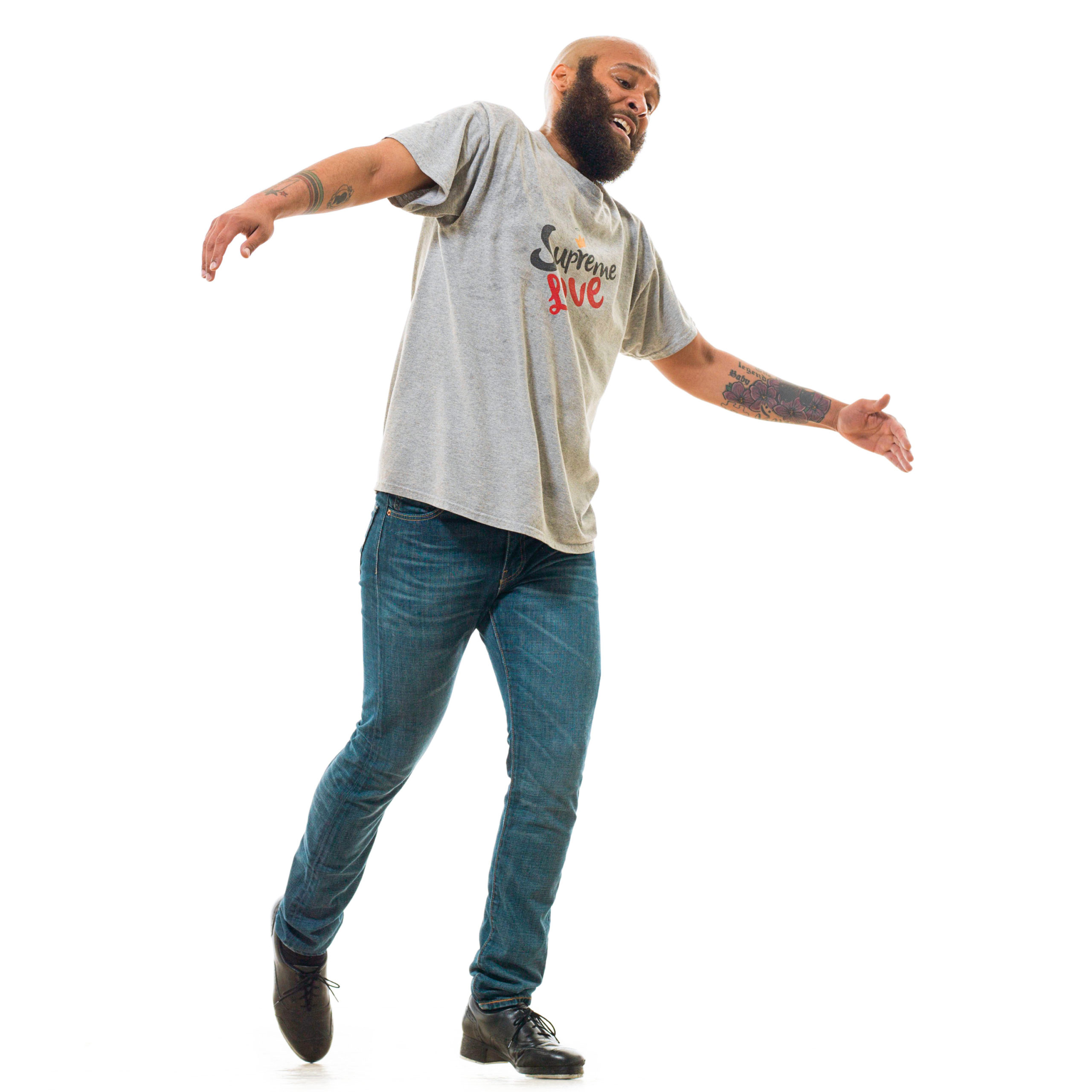Jumaane Taylor, Tap Dancer and Artistic Director of Chicago Human Rhythm Project, on Connecting With the Ancestral Roots of His Art Form
I believe I dance because I am thankful to believe in God. This art form I practice comes from a spiritual tradition, and I feel the history of that tradition whenever I am being honest with myself on the floor…or whenever I’m improvising to John Coltrane albums. Though as I tell my students, I cannot help but to think of the past master hoofers of the minstrel shows, jazz clubs and concert stages. Recognizing what our people had to endure to create tap dance, and investigating that infamous struggle, is inspiration for me. I aspire to be a tap dance representative who both honors our ancestors and evolves the percussive dance-rooted genre.
I am always thinking of them…the ancestors. From a minstrel clip of The Three Eddies, a singing and tap-dancing trio who displayed the fastest taps I’ve ever heard. (Not to mention their legendary showmanship in The Birth of Television, as if their livelihoods depended on the film.) To the queen who established the way a body should move in tap dance, Lois Bright—superbly displayed within her feature during Hi De Ho, from 1947. To the jazz hoofer Baby Laurence, who “was always ahead,” as Dr. Bunny Briggs stated. Baby, who died in 1974, improvised with live jazz musicians in a way that communicated masterful rhythmic and melodic tap compositions. These ladies and gentlemen of tap revolutionized me.
It’s all because of my mother, though. My mother, who insisted that when she had children, they would all be signed up for dance classes. Before my aunt Patricia Jervis passed, she enrolled her son at the Sammy Dyer School of the Theatre. And so that’s where my siblings and I attended. I was surrounded by legendary ambiance at this dance school in Chicago, from posters of Bill “Bojangles” Robinson in the hall to alumni like master hoofer Ted Louis Levy directing our recitals. It set the bar for hoofing in the Midwest—where I was always encouraged to perform, teach but also improvise tap. My father worked many overtimes for this to happen, until I was able to start making my own lunch money and earn a tap scholarship.
Although scholarships for tap did not exist everywhere, the Chicago Human Rhythm Project did offer opportunities for their annual tap festival. And that was it…when I caught the rhythmic fever. Attending this festival infected me. That community was a multicultural group dedicated to preserving tap dance: Practicing professionals of all ages, with genuine respect and common understanding, sharing as well as performing perspectives at the festival. They uplifted the form as a community with each distinctive voice, for the world to witness The Creator’s rhythmical creation…tap dance, where I feel our Creator every time. Which is why I dance. Each experience leads me into the life I am blessed to live, only as a tap dancer.




